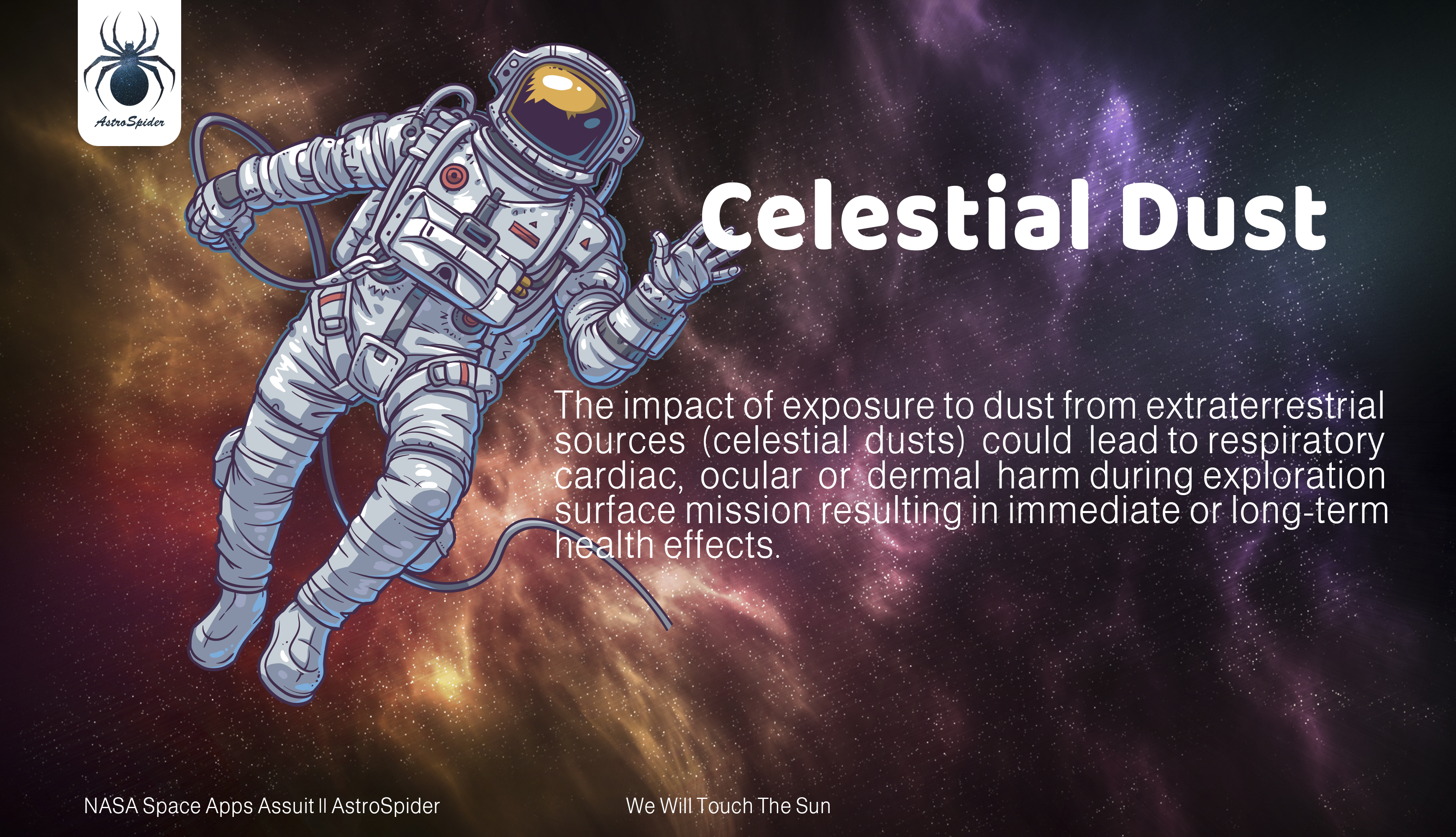
Celestial Dust
Risk statement: Lunar dust particles are unlike terrestrial dust. Lunar dust is
known to have a high surface area and other distinctive shape and chemical
characteristics. Risks of celestial dust in long-term travels start from entire
the lunar orbital surface
Lunar dust has properties different from that of dust found on the Earth's
surface, there are possibilities that the first can affect several vital systems of
the bodies of living organisms, including (respiratory, ocular, Dermal, and
cardiopulmonary) and can affect the performance of crew members during their
Impacts celestial body missions.
The danger of cosmic dust begins at the surface of the lunar orbit and increases
with the long term of the mission, as well as approaching the surface of Mars.
Therefore, NASA determined that in a mission exceeding six months, it should
be 0.3 mg / m 3 This was determined by the Apollo 14 missions that brought
samples of lunar dust Experiments and studies were conducted on it until the
PEL (Permissible Limit for Lunar Dust Exposure) was set
But despite our knowledge of the permissible limit for exposure to lunar dust, we
do not know what the risk of the cosmic dust in space can affect in detail, but it
will most likely not have less impact than that on the moon, as it can affect the
respiratory, ocular, dermal or heart-pulmonary systems. Research is continuing
to focus on determining whether lunar dust causes allergic reactions and what is
the permissible dose to avoid infection.
And upcoming research or future work will be carried out on Mars surface
samples once they are obtained.
Dermal and ocular harm
During the Apollo, mission crews reported irritation of skin and eyes after
exposure to lunar dust. However, there are no data with which to establish the
dermal and ocular toxicity of lunar dust. The determination of the dermal and
ocular hazards of the lunar dust is necessary to predict and prevent any
consequence that could result from insults to the integument or cornea
originating from contact with lunar dust during mission operations.
Conclusion
The evidence literature provides a substantial basis for concern that prolonged
exposure to respirable celestial dust could be detrimental to human health.
Celestial bodies where a substantial portion of the dust is in the respirable range
or where the dust has large reactive surface areas or contains transition metals
or volatile organics represent greater risks of adverse effects from exposure to
the dust. It is possible that in addition to adverse effects on the respiratory
system, inhalation and ingestion of celestial dust could pose risks to other systems.
Therefore, the countermeasures to confront this challenge lie in not being
directly exposed to cosmic dust, as well as securing space suits and boats during
flights to prevent the entry of such dust to humans or living organisms.